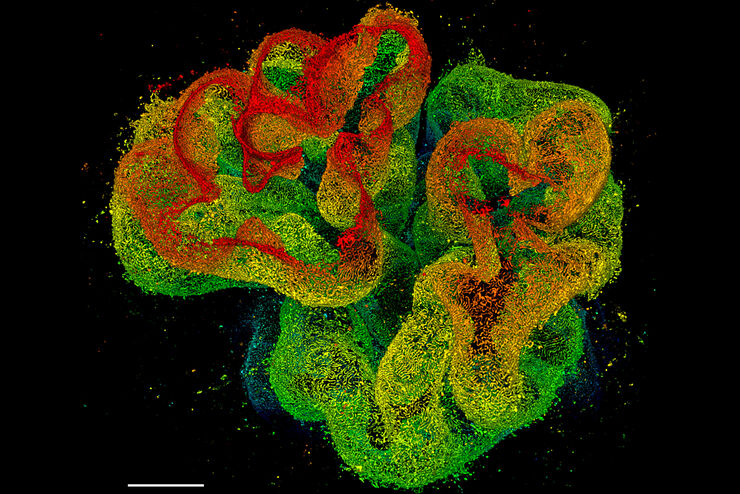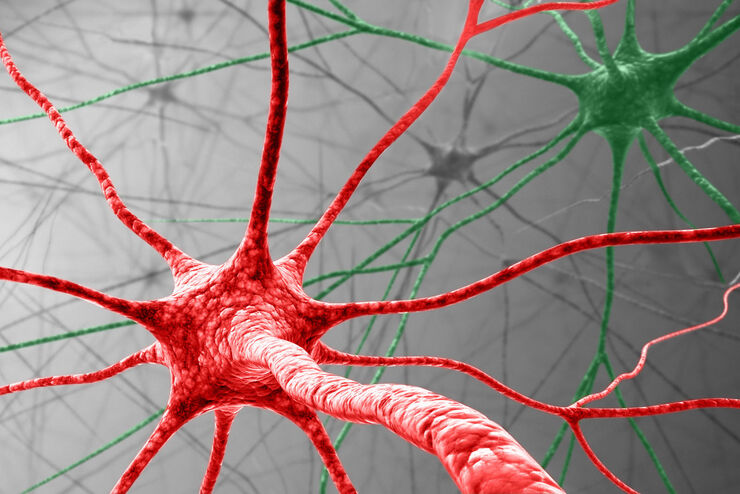Filter articles
标签
产品
Loading...
![[Translate to chinese:] Multi-color SRS image of tri-cellular cancer spheroid showing total lipids (yellow, 2850 cm-1), unsaturated lipids (magenta, 3050 cm-1), collagen (SHG, cyan). Sample courtesy of R. Rudolf, J Klicks, Hochschule Mannheim [Translate to chinese:] Multi-color SRS image of a tri-cellular cancer spheroid](/fileadmin/_processed_/9/3/csm_Tricellular_Cancer_Model_179224fab1.jpg)
相干拉曼散射显微镜的潜力一瞥
相干拉曼散射显微镜(CRS)是一种强大的无标记化学特异性成像方法。它基于样品中分子的固有振动对比特征。
CRS 可提供有关细胞、组织和完整模式生物体内生化组成和代谢过程的高分辨率(亚细胞水平)和动态(高达视频速率)信息。它还能在不干扰小分子功能的情况下对其进行成像。这些信息与荧光显微镜提供的分子对比具有高度协同作用。毫不奇怪,CRS…
Loading...

组织图片库
对动物和人体组织进行视觉分析对于了解癌症或神经变性等复杂疾病至关重要。从基本的免疫组化到体内成像,共聚焦显微镜和先进的模式可以让人们了解细胞、生物分子及其在环境中的相互作用。
Loading...

20 Years of Leica Laser Microdissection
Phenotype-genotype correlations are key for insight. From Eye to Insight is therefore fitting perfectly to Leica Microsystems and in particular to laser microdissection. Laser Microdissection, also…
Loading...
![[Translate to chinese:] HeLa cells stimulated with LPS. Image has been subjected to deconvolution. [Translate to chinese:] HeLa cells stimulated with LPS. Image has been subjected to deconvolution.](/fileadmin/_processed_/c/0/csm_HeLa_cells_stimulated_with_LPS_deconvolution_cf0b3cf706.jpg)
显微镜下的慢性炎症
在慢性炎症的过程中,身体的某些部位会反复发炎。许多人类疾病都是如此。在宽场光学显微镜的帮助下,可以对从细胞水平到整个生物体的潜在过程进行检查。本文介绍了几种宽场显微镜应用,如免疫荧光、活细胞成像、组织学和比率分析,以深入了解慢性炎症的发展、相关疾病及其治疗。
Loading...
![[Translate to chinese:] CARS image of cellulose fibers. The fibers are visualized through the C–H vibrations of the polyglucan chains in cellulose. [Translate to chinese:] CARS image of cellulose fibers. The fibers are visualized through the C–H vibrations of the polyglucan chains in cellulose.](/fileadmin/_processed_/b/1/csm_Fig3_02_02_2b89000fd2.jpg)
CARS 相干反斯托克斯拉曼散射显微镜: 分子特征振动对比成像
相干反斯托克斯拉曼散射(CARS)显微技术是一种根据分子振动特征生成图像的技术。这种成像方法不需要标记,但可以从一系列重要的生物分子化合物中获得特定的分子信息。


![[Translate to chinese:] Virally labeled neurons (red) and astrocytes (green) in a cortical spheroid derived from human induced pluripotent stem cells. [Translate to chinese:] Virally labeled neurons (red) and astrocytes (green) in a cortical spheroid derived from human induced pluripotent stem cells. THUNDER Model Organism Imagerwith a 2x 0.15 NA objective at 3.4x zoomwas used to produce this 425 μm Z-stack (26 positions), which is presented here as an Extended Depth of Field(EDoF)projection.](/fileadmin/_processed_/e/c/csm_THUNDER_Imager_Model-Org_Header-Gallery-Neuroscience_e911743fb7.jpg)
